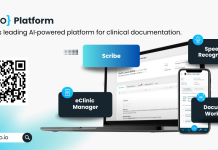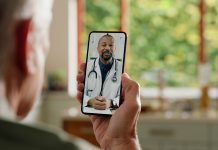Sakir Mahmud, Principal Category Manager for Digital and IT at NHS Shared Business Services, discusses NHS Digital Future, an initiative aimed at driving a critical hardware overhaul
The NHS is undergoing a vital transformation to modernise its IT infrastructure and improve efficiency across the board as the government’s much-heralded ‘analogue to digital’ shift gets underway.
Mindful of the NHS’s need to do more with less, NHS Shared Business Services (NHS SBS) and NHS North of England Commercial Procurement Collaborative (NOE CPC) have jointly launched the new £1.5 billion Tech Devices – Link 4 framework agreement. Designed to streamline access to and procurement of commonly used IT devices, it ensures healthcare professionals can be equipped with the right tools to enhance patient care swiftly and efficiently.
The Digital Challenge: Why change is needed
Despite incredible advancements in medical science, the NHS still relies on outdated IT systems, creating inefficiencies in workflows, data sharing, and treatment coordination. Lord Darzi’s report highlighted technology as a critical enabler in improving NHS operations, especially in the face of long patient waiting lists, budget constraints, and staff shortages.
Good IT equipment is not a “nice to have”. It is fundamental to improving patient outcomes. Devices such as tablets, mobile workstations, and diagnostic monitors help streamline clinical efficiency, reduce administrative bottlenecks, and enable healthcare professionals to spend more time on direct patient care.
Key benefits include:
- Seamless Electronic Patient Record (EPR) access, ensuring faster data retrieval and patient processing.
- Integrated telehealth solutions, supporting remote consultations and virtual care.
- AI-powered analytics, aiding diagnostics, treatment planning, and hospital resource management.
Breaking bottlenecks
One of the biggest roadblocks to IT modernisation has been the cost and complexity of replacing legacy systems, leaving many NHS trusts struggling to upgrade essential technology efficiently. Traditional procurement processes can be cumbersome, resulting in delays in frontline staff and employees accessing the tools they need.
The Tech Devices – Link 4 framework agreement overcomes these obstacles through:
- A pre-approved shortlist of trusted suppliers and solutions, reducing vetting time.
- A simplified procurement process, cutting through red tape.
- Transparent, competitive pricing, ensuring cost efficiency.
By using it, healthcare organisations can benefit from faster turnaround times, standardised pricing and bulk-buying advantages for national savings. This eliminates common procurement hurdles like lengthy tendering procedures, complex compliance checks, and cost uncertainty.
With secure, up-to-date technology, staff can focus on delivering high-quality, digitally enabled patient care.
Supporting NHS sustainability and cost-efficiency
The solutions on offer via the framework agreement fall under four key categories (Lots):
- Everyday IT devices and peripherals:
- Desktops, laptops, tablets, and essential peripherals like keyboards, monitors, and headphones, to streamline daily healthcare operations.
- Healthcare-focused IT hardware:
- A specialised category which includes medical workstations, diagnostic monitors, and portable technology to enhance workflow efficiency. These devices support real-time patient record access, improve medication tracking and assist in making accurate diagnoses faster and more effective.
- Printing and scanning solutions:
- Printing and scanning remain integral in patient care. This Lot covers label printers, asset scanners, and high-volume printing equipment, supporting inventory management, patient records, and prescription documentation efficiently.
- Refurbished and sustainable IT devices:
- Aligning with the NHS’s net-zero sustainability goals, the offer includes refurbished and remanufactured devices that provide high-performance alternatives to brand-new hardware. By extending device lifespans, NHS organisations can cut costs, make savings and reduce e-waste.
Endorsed and recommended by NHS England as a route to market for trusts procuring Digital & IT solutions, the framework agreement also extends beyond the NHS to the wider public sector – including schools, colleges and universities, and local authorities, enabling them to leverage the buying power of the NHS.
Modernising for a Digital Future
The NHS’s vision of a streamlined, inclusive digital health service depends on a robust IT infrastructure.
Without modern devices, NHS trusts cannot upgrade their existing systems, such as EPR. Community nurses lose valuable time on administrative tasks instead of patient visits. Legacy systems lack robust cybersecurity measures, leaving sensitive patient data vulnerable to breaches. The adoption of advanced technologies – such as artificial intelligence – is hampered, stifling opportunities for innovation.
Modernising and investing in advanced IT equipment is therefore vital to overcoming challenges and key to improving productivity and care.











